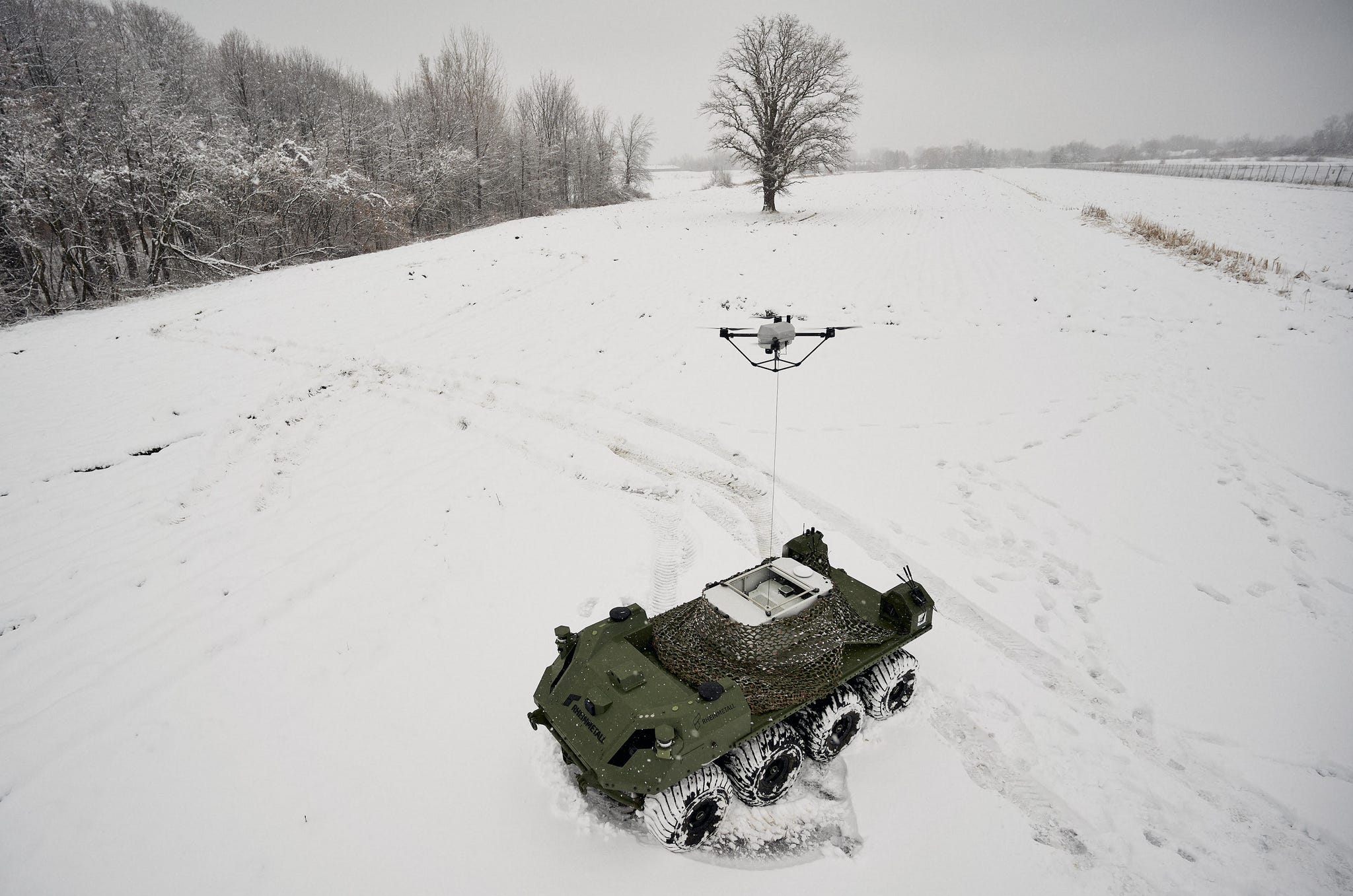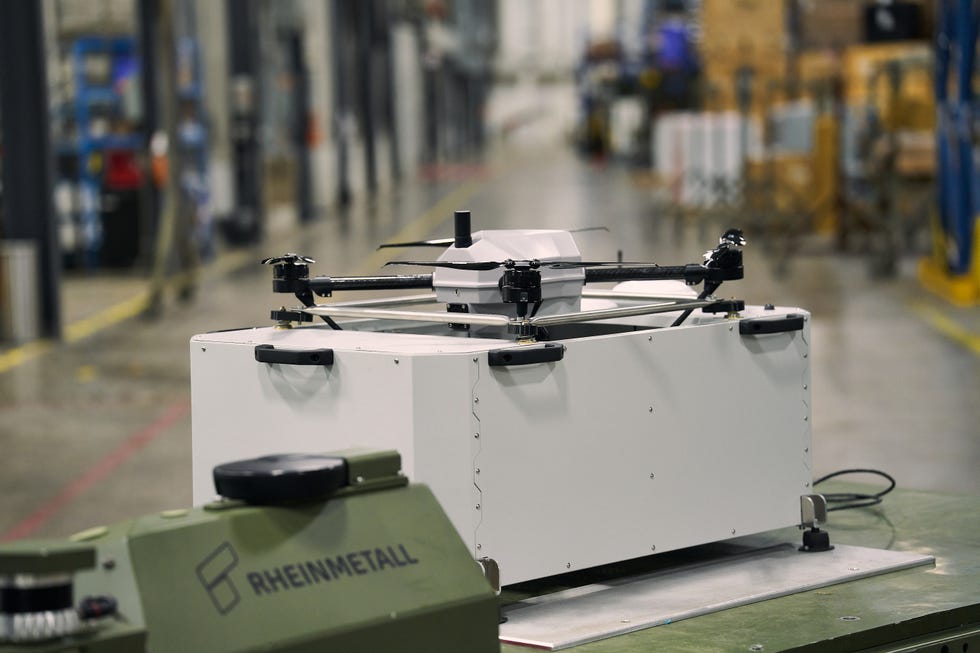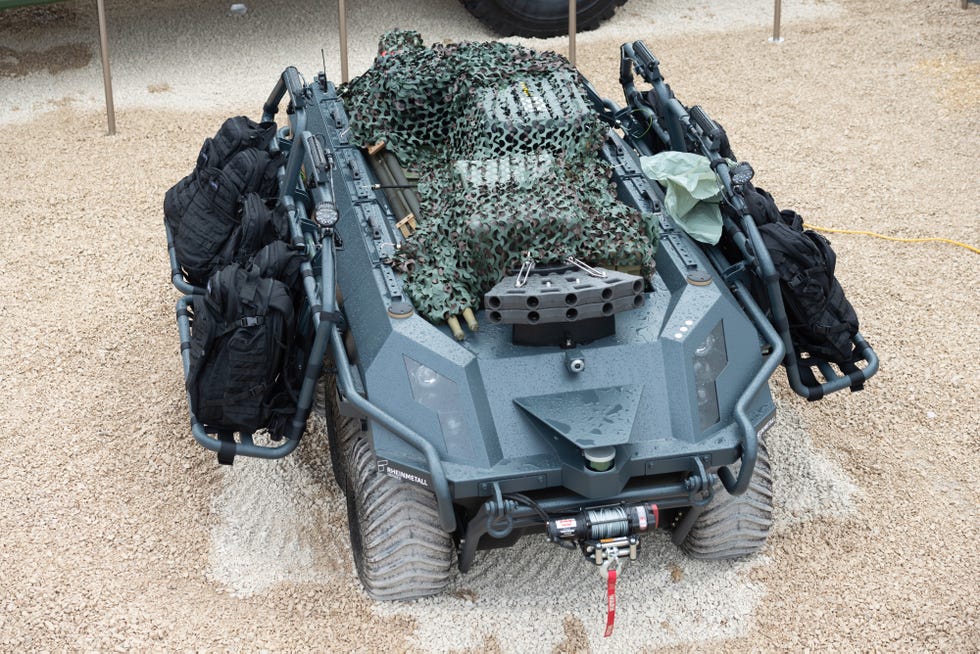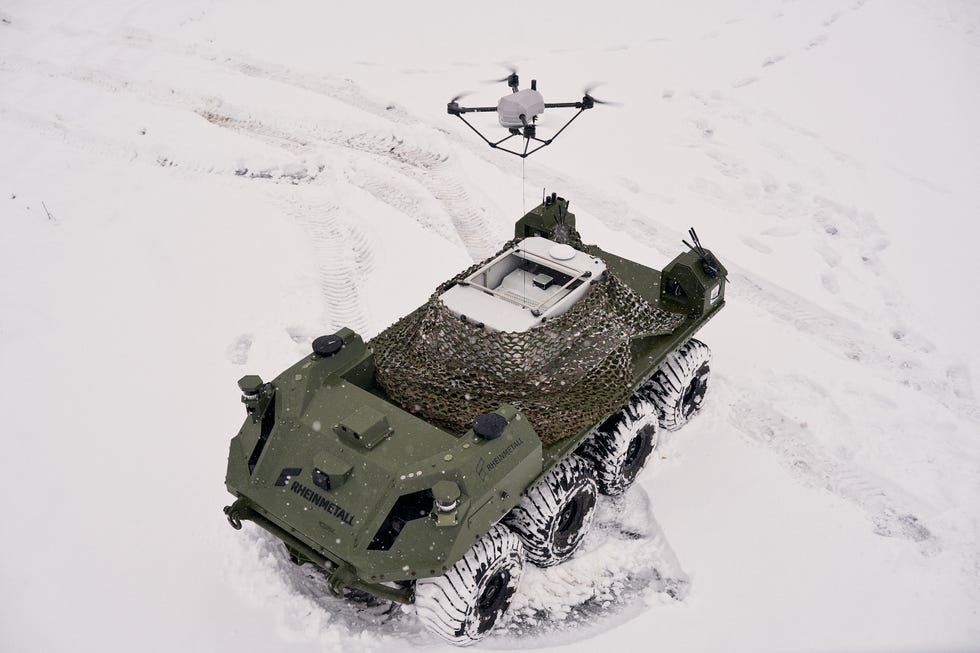SÉBASTIEN ROBLIN

Robots were on the march in the winter of 2023-2024. Both Russian and Ukrainian forces began using unmanned ground vehicles (UGVs) on a large scale for the first time in the bloody battlefields around the city of Avdiivka. Unlike the gun-toting robot phalanxes of the Star Wars prequals, these wheeled drones were delivering badly needed supplies and ammunition to human soldiers in frontline positions.
This content is imported from x. You may be able to find the same content in another format, or you may be able to find more information, at their web site.
But Ukraine’s skies are already saturated with flying drones—especially cheap but fast loitering munitions guided by operators and used to ram targets. And so, each sides’ flying robots have been attacking the other’s ground robots.
This content is imported from x. You may be able to find the same content in another format, or you may be able to find more information, at their web site.
The war of robot versus robot that was first envisioned by science fiction is becoming a reality. But as drones take on a growing share of military tasks, they will likely not only fight other drones, but help friendly ones perform their missions.
That’s the idea behind the new Elistair Khronos tethered surveillance drone, tested this January in conjunction with a Mission Master-SP ground drone before observers from European militaries.
“We’ve performed a demonstration for European forces. The concept is very simple,” Elistair’s Guilhem de Marliave, with company co-founder Timothée Penet, told Popular Mechanics. “We combine ground and air robots to have this very discrete fully automated reconnaissance system for border patrol and defense use. It’s specifically designed to be integrated into vehicles for convoy protection, patrols, and reconnaissance.”
Elistair is a French company specializing in tethered drones. Their machines are literally tied to a ground control station by a cable that serves both as a power cord and data/command link. Tethered aerial systems trade freedom of movement for very long endurance, as well as fast and reliable data transmission.

An Elistair Khronos tethered drone on its drone box used for takeoff and landing mounted on a Rheinmetall Mission Master SP unmanned ground vehicle.
While Elistair has previously offered tethered ‘drone boxes’ that can be attached to vehicles, the carrier vehicle for the 66-pound Khronos can actually move while the drone is deployed. Rather than being ‘tugged’, the drone’s propulsion allows it to safely follow at 50 meters altitude and speeds of up to 12 miles per hour.
That’s not exactly highway speed, but it may be enough for ground drones intended to accompany dismounted infantry on foot, or for escorting vehicles in a large, slow convoy. Additionally, given adequate electrical supply from its carrier, it can stay in the sky for up to 24 hours at a time before it’s recommended that the engines are given a break.
This content is imported from youTube. You may be able to find the same content in another format, or you may be able to find more information, at their web site.
The all-weather quadcopter drone (it has an IP-54 waterproof rating) takes two minutes to deploy, and can operate without access to satellite navigation if necessary. Its 70-meter-long tether, which transfers data at 100 megabytes per second, allows ‘lights off’ operation without radios signals that could make it susceptible to detection and potential jamming by opposing forces.
Once mission data is input through its T-Planner 2 software, Khronos can pilot itself autonomously, including fully automated takeoff and landing out of and into its drone box. Furthermore, the drone’s AI was designed by Jetson Physics to automatically pilot the drone should the command link be interrupted for whatever reason.
The Mission Master UGV
The eight-wheeled MissionMaster SP (for ‘Silent Partner’)—by German defense giant Rheinmetall’s Canadian branch—is foremost designed to serve as a hi-tech ‘mule.’ It’s meant to quietly accompany infantry squads on foot, carrying burdensome weapons and sensors and performing dangerous ‘last mile’ resupply runs.

Side view of the Elistair Khronos tethered drone box mounted on a Rheinmetall Mission Master SP unmanned ground vehicle, hi-lighting the ability to rapidly ’slap on’ different mission payloads to its chassis.
Optimized for stealth with its low profile and low-noise propulsion, it can lug a 1,322 pound payload for up to 8 hours, accelerate to a maximum speed of 25 miles per hour unloaded, and even swim at 3.7 miles per hour. An autonomous AI navigation system called PATH helps the vehicle detect and avoid obstacles. It’s also light enough for air transportation by CH-47 or CH-53 heavy lift helicopter.

Mission Master UGV on display in EuroSatory in 2018. Note its configuration serving as a ’mule’ for an infantry squad.
Modular mission payloads also allow Silent Partner to perform stealthy surveillance missions, serve as a radio relay or chemical/biological/radiological detection platform, and carry out medical evacuations by lifting two wounded soldiers in stretchers from the battlefield.
In 2019, the Royal Canadian Army procured the SP from Rheinmetall’s Canadian branch for testing. The British Army ordered four SPs in 2019, with two medevac modules.
There’s also an Armed Reconnaissance subvariant of the SP, equipped with a FieldRanger remote-control 7.62-millimeter machinegun turret, a surveillance radar, 360-degree cameras, and laser rangefinder and designator—all mounted on a mast that can extend up to 3.5 meters high, allowing for scouting and sniping while the vehicle’s hull is behind cover.
This content is imported from youTube. You may be able to find the same content in another format, or you may be able to find more information, at their web site.
Making the UGV/UAV robot team work
de Marliave and Penet emphasized that Khronos is currently focused on the intelligence-surveillance-reconnaissance (ISR) role. With a max payload of 1.3 pounds, Khronos comes with two standard camera options: the lighter quarter-pound DragonEye electro-optical/infrared camera, and the premium Raptor, which boasts up to 80x magnification (40x optical, 2x digital) at day and 4x magnification at night. Both of these cameras by NextVision have 1280x720p daylight resolution (the Raptor has the same at night) and are gyrostabilized.
With Raptor, a Khronos drone hovering at 60 meters altitude can track the movement of humans within a 6 miles radius (2.8 miles at night), or a car-sized vehicle out to 25 miles away (3.7 miles at night). That’s highly useful on the tactical level—a Ukrainian drone pilot stated that providing early warning of enemy ground attacks has proven a life-saver for frontline soldiers.
Khronos’s Jetson AI, which de Marliave described as “highly evolutive,” also allows people and objects to be identified and classified at shorter distances.
But just how robust is Khronos if used the ‘wrong way’ at excessively high speeds—or, say, dragged into a forest where its cable risks getting tangled up in foliage? Penet said the drone has ‘margins,’ meaning it can tolerate a degree of usage outside the usual safe parameters. He added that he has tests planned to figure out just how hard Khronos can be pushed (speed-wise) in an emergency.
Some of Elistair’s earlier tethered drones had the ability to ditch the tether and move freely via command link in the event of an urgent operational need. However, Penet explained that they discarded that approach for Khronos. “What we quickly found out is that when you build such a [detachable tether] system, it will not be very good at tethered flights and not very good at free flight (which require heavy batteries). We chose to focus on making a very good tethered drone.”
An affordable drone which can persistently accompany moving ground vehicles also has hypothetical applications beyond ISR. That could include relaying command links and videofeeds to the UGV carrier should the latter lose its command link due to complex terrain, helping spot anti-tank mines before ground vehicles roll over them, and providing early warning of approaching enemy drones—a particularly urgent need for soldiers in Ukraine.

Mission Master SP with a tethered Khronos drone deployed during trials in Quebec.
‘Captive’ drones also may have appeal on manned combat vehicles, the next-generation of which will likely come with their own integrated small drones. Already, cheap civilian drones have proven remarkably useful to Ukrainian tank units for facilitating command control and spotting the exact position of enemy infantry in trenches.
Of course, an un-tethered small drone can roam well ahead of its carrier, but a tethered one would benefit from much greater endurance and less susceptibility to jamming. French manufacturer Nexter has proposed a tethered drone for its Titus MRAP-style vehicle, while Spain’s VAMTAC S3 4x4 reconnaissance truck features a large SDLE hexacopter tethered by a 150-meter long cable.
Time will tell whether long-endurance tethered drones are integrated into additional ground vehicles—crewed and uncrewed alike.
“Without disclosing [client information], let’s just say that the PR and news of our tests with Rheinmetall have already brought quite a large number of interested inquiries,” de Marliave told Popular Mechanics.
He also noted that Khronos can already be used by civilians under certain conditions, and that they’re working through the “right channels” for eventual certification for broader civilian use. Furthermore, trials should be held soon to evaluate Khronos’ use in a border control role.
No comments:
Post a Comment